APPC Mnemonics
1/73
There's no tags or description
Looks like no tags are added yet.
Name | Mastery | Learn | Test | Matching | Spaced |
|---|
No study sessions yet.
74 Terms
Horizontal Asymptote Limit Notation
lim x- +infinity f(x) = #
As input value increases without bound, the output values approach #
FLOOR
a f(b(x-h) + k
VERTICAL CHANGES
stretch = a>1
compress = a<1
a f(b(x-h) + k
HORIZONTAL CHANGES
stretch = b<1
compress = b>1
arctan(x)
Domain = [-infinity, +infinity]
Range = [-pi/2 , pi/2]
Quadrants 1 & 4
![<p>Domain = [-infinity, +infinity]<br>Range = [-pi/2 , pi/2]<br><br>Quadrants 1 & 4</p>](https://knowt-user-attachments.s3.amazonaws.com/796a9065-05a8-4c90-a985-4e9d5f7454a0.jpg)
which of the following gives the graph of the displacement of 𝑃 from the 𝑥-axis as a function of 𝜃 ?
𝑦=cos𝜃. This response is the horizontal displacement of 𝑃 from the 𝑦-axis instead of the vertical displacement of 𝑃 from the 𝑥-axis.
𝑦=sin𝜃. The vertical displacement of 𝑃 from the 𝑥-axis
find x's (FRQ)
f(x)=# when x=# and x=#
why not invertible?
there are outputs of f that are not mapped to unique input values
"To define a function, for every x there must only be 1 y."
"FAILS HORIZONTAL LINE TEST IS NOT ENOUGH"
New features!
P.S
Zoom fit
Trace
On Unit circle, big middle ones are +30 and the others are +15
𝑔 is best modeled by a quadratic function, because
the change in the average rates of change over consecutive equal-length input-value intervals is constant.
On a semi-log plot
if you have exponential values, the dots appear linear.
To find the sum of nth terms on a sequence
Use Sn = n/2 (a1+an)
S(#: number it asks for) = #/2 (1st term + an from arithmetic sequence)
an = a1 + d(n-1)
d = +- to get to next term
Linear ROC
ROC is constant at any interval
Quad ROC
2nd differences of output values are constant
Polynomial ROC
nth differences of output
Values are constant of equal length input intervals
Exponential ROC
output values are proportional over ELII
EXES DONT X!!!
x+
y*
Logarithmic ROC
Proportional input values result in constant change in output values
x*
y+
[a,b]
ROC = (f(b) - f(a))/b-a
Vertical asymptote limit notation
lim x- # from - (Left) f(x) = +- infinity
As input value approaches # from the left, the output values decrease without bound.
WALL
tiny # is floor, +- infinity is clock on WALL
n < d
limit notation =
y = 0
D is big? You get 0 play!
n = d
ratio of leading coefficients
n > d
If d is 1 bigger, SLANT
Limit notation = +- infinity to +- infinity
Arithmetic sequence
an = ak + d(n-k)
an= a0 + dn

Geometric sequence
gn = gk(r)^(n-k)
gn = g0r^n
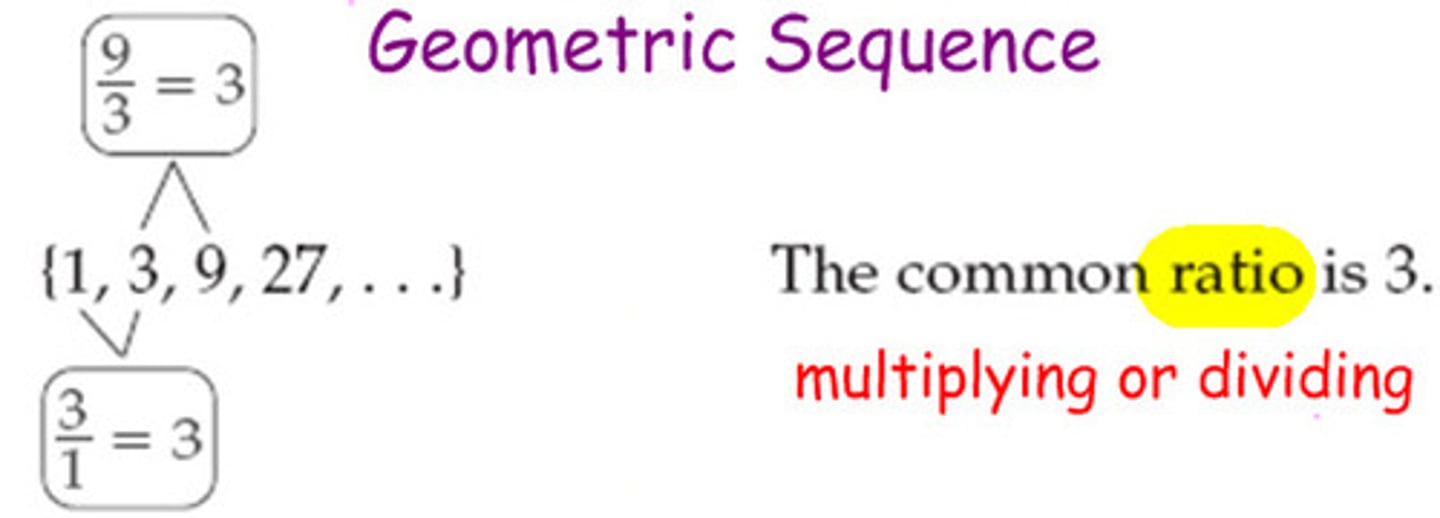
arccosx
Domain = [-1,1]
Range = [0, pi]
Quadrants 1 & 2
![<p>Domain = [-1,1]<br>Range = [0, pi]<br><br>Quadrants 1 & 2</p>](https://knowt-user-attachments.s3.amazonaws.com/593b321f-6abe-4d08-aa1d-521266840788.jpg)
arcsinx
Domain = [-1,1]
Range = [-pi/2 , pi/2]
Quadrants 1 & 4
![<p>Domain = [-1,1]<br>Range = [-pi/2 , pi/2]<br><br>Quadrants 1 & 4</p>](https://knowt-user-attachments.s3.amazonaws.com/e3b3c756-e50b-442e-a1dd-d96296696af0.jpg)
Pythagorean Identities
sin²∅ + cos²∅ = 1
tan²∅ + 1 = sec²∅
cot²∅ + 1 = csc²∅
sin²∅ + cos²∅ =
1
tan²∅ + 1 =
sec²∅
cot²∅ + 1 = cosec²∅
csc²∅
Reciprocal Identities
sinθ = 1/cscθ ; cscθ = 1/sinθ
cosθ = 1/secθ ; secθ = 1/cosθ
tanθ = 1/cotθ ; cotθ = 1/tanθ
csc∅
1/sin∅
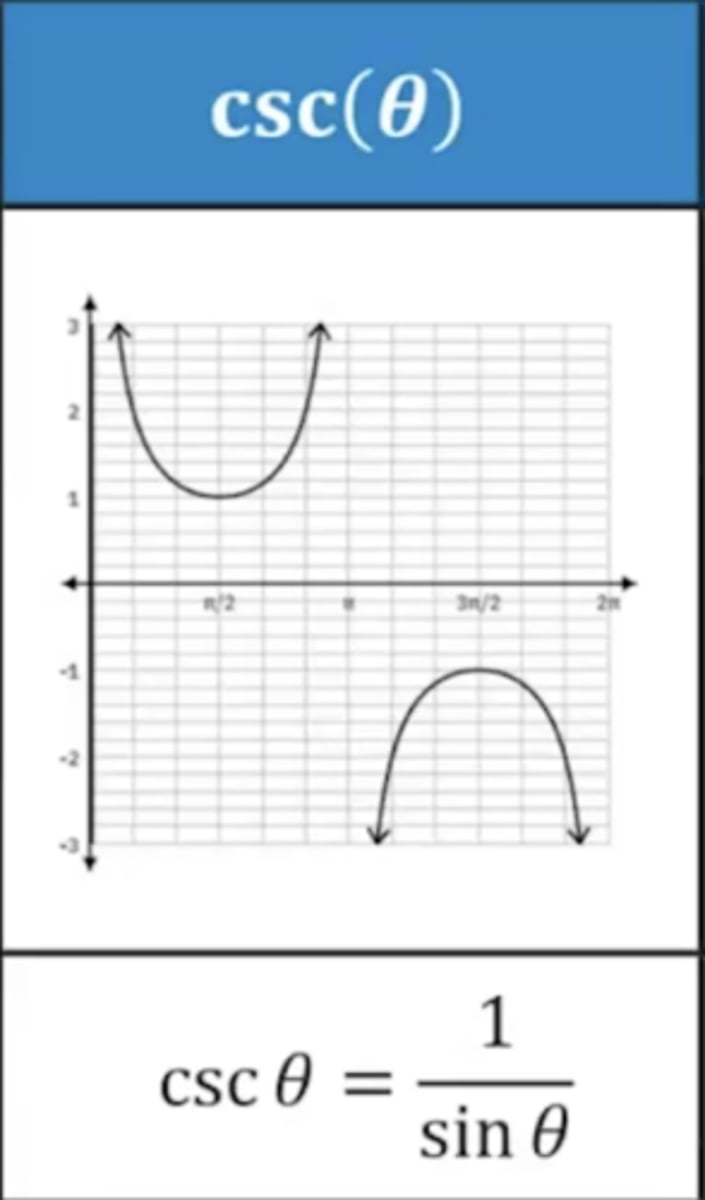
sec∅
1/csc∅
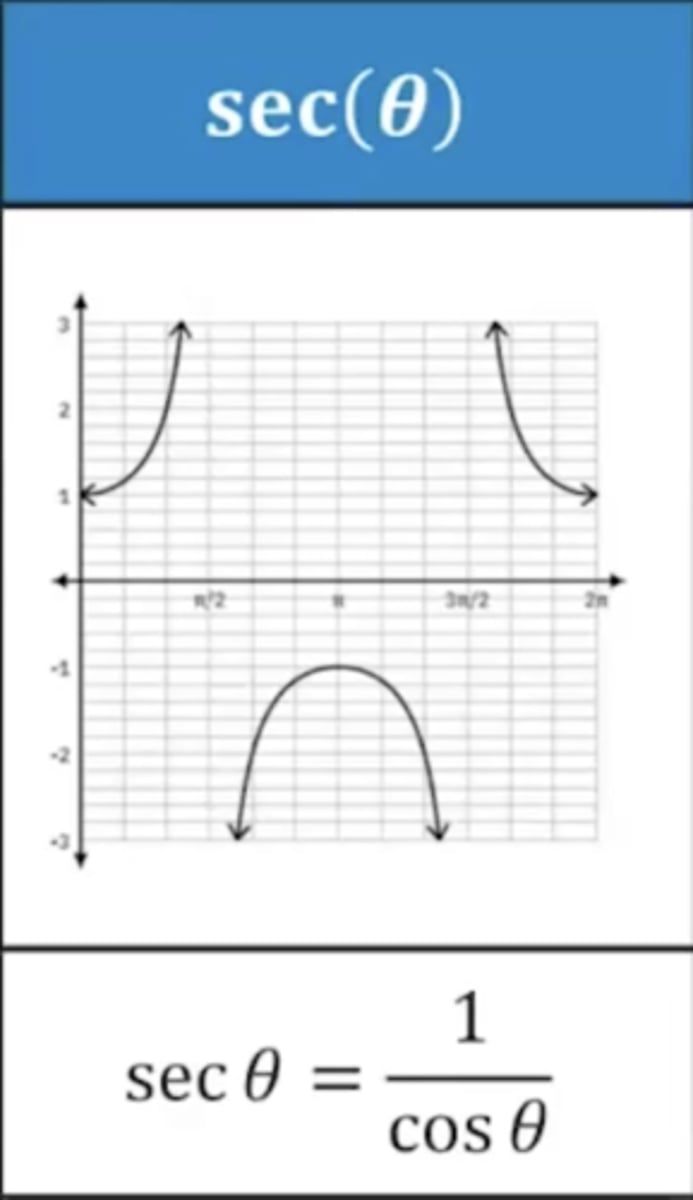
cot∅
1/tan∅
cos∅/sin∅
Always decreasing!

sin∅
1/csc∅
cos∅
1/sec∅
tan∅
1/cot∅
sin∅/cos∅
sin (2∅)
2sin∅cos∅
cos(2∅)
cos^2∅-sin^2∅
2cos^2∅ - 1
1 - 2sin^2∅
sin(u+u)
sin2u = sin u cos u + sin u cos u
cos (a+-B)
sin (a+-B)
cos a cos B +- sin a sin B
cos thinks the signs are opposite !
sin a cos B +- cos a sin B
sin thinks they have the same sign and sit upfront together with siblings in the back!
rectangular to polar
complicated
r^2 = x^2 + y^2
arctan
polar to rectangular coordinates
x = r cos(∅)
y = r sin(∅)
polar to complex
a + bi = r (cos∅ + i sin ∅)
r is only ever
+
Frequency
Reciprocal of Period
Rotation / Time
R comes first in the word 'Frequency'.
cos ∅
sin (∅ + pi/2)
Semi-log plots
convert exponential curves into straight lines
• Something that curves up becomes a straight line with positive slope
• Something that curves down becomes a straight line with negative slope
• For exponential decay, a semi-log plot graphs log of amount vs time
• For exponential decay, a semi-log plot is a straight line with negative slope
• Semi-log plot intercepts the x axis where the original y value is 1
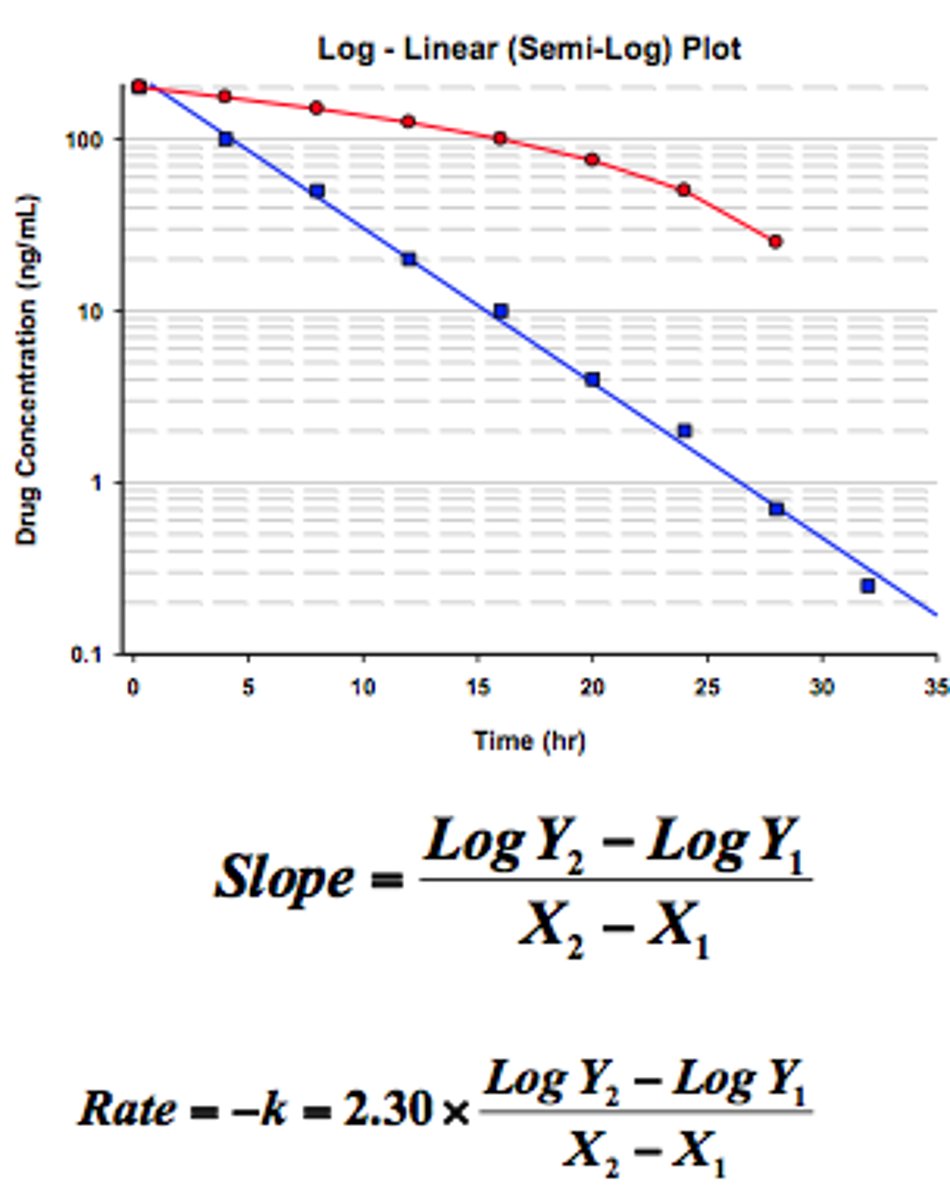
Odd
f(-x) = -f(x)
negative son - negative parent :(
Even
f(-x) = f(x)
negative son becomes positive son :D
2pi/b
b =
Period
2pi (or pi)/period
To find VA of tan functions
set inside = to pi/2
cos graph
Domain = (-infinity, +infinity)
Range = [-1,1]
Period = 2pi
starts at max 1
hits pi/2
bottoms out at (pi,-1)
![<p>Domain = (-infinity, +infinity)<br>Range = [-1,1]<br>Period = 2pi<br><br>starts at max 1<br>hits pi/2<br>bottoms out at (pi,-1)</p>](https://knowt-user-attachments.s3.amazonaws.com/26976598-119a-4236-8610-87502d65dd50.jpg)
sinx graph
Domain = (-infinity, +infinity)
Range = [-1,1]
Period = 2pi
starts at 0
hits (pi/2,1)
hits pi
bottoms out at (3pi/2,-1)
![<p>Domain = (-infinity, +infinity)<br>Range = [-1,1]<br>Period = 2pi<br><br>starts at 0<br>hits (pi/2,1)<br>hits pi<br>bottoms out at (3pi/2,-1)</p>](https://knowt-user-attachments.s3.amazonaws.com/b83aace8-4a34-4caf-995f-422ffb8132f6.jpg)
tanx graph
Range = [-infinity,+infinity]
Period = pi
always increasing
pi/4 where it goes straighter
![<p>Range = [-infinity,+infinity]<br>Period = pi<br><br>always increasing <br>pi/4 where it goes straighter</p>](https://knowt-user-attachments.s3.amazonaws.com/30df2963-9b37-4bf7-8d72-3623168ebac3.jpg)
Polar calculator
mode - PoL (∅) - Radian
Symmetry across y-axis
Symmetry across y-axis
sin∅
cos∅
# - # cos∅
Dented circle with inner loop
3sin(2∅)
Rose petal because no +-
Odd #
Same amount of petals
Even #
Twice amount of petals
Pascal's Triangle
(x+2)^5
2 is y-value
x DECREASES
y starts at 0 but INCREASES
pascal has decreasing x's because he is moving on!
Exponential Function
ab^x
a - Initial Value
b - Must be +, but not 1
Growth - a > 0 b > 1
Decay - a > 0. 0 < b < 1
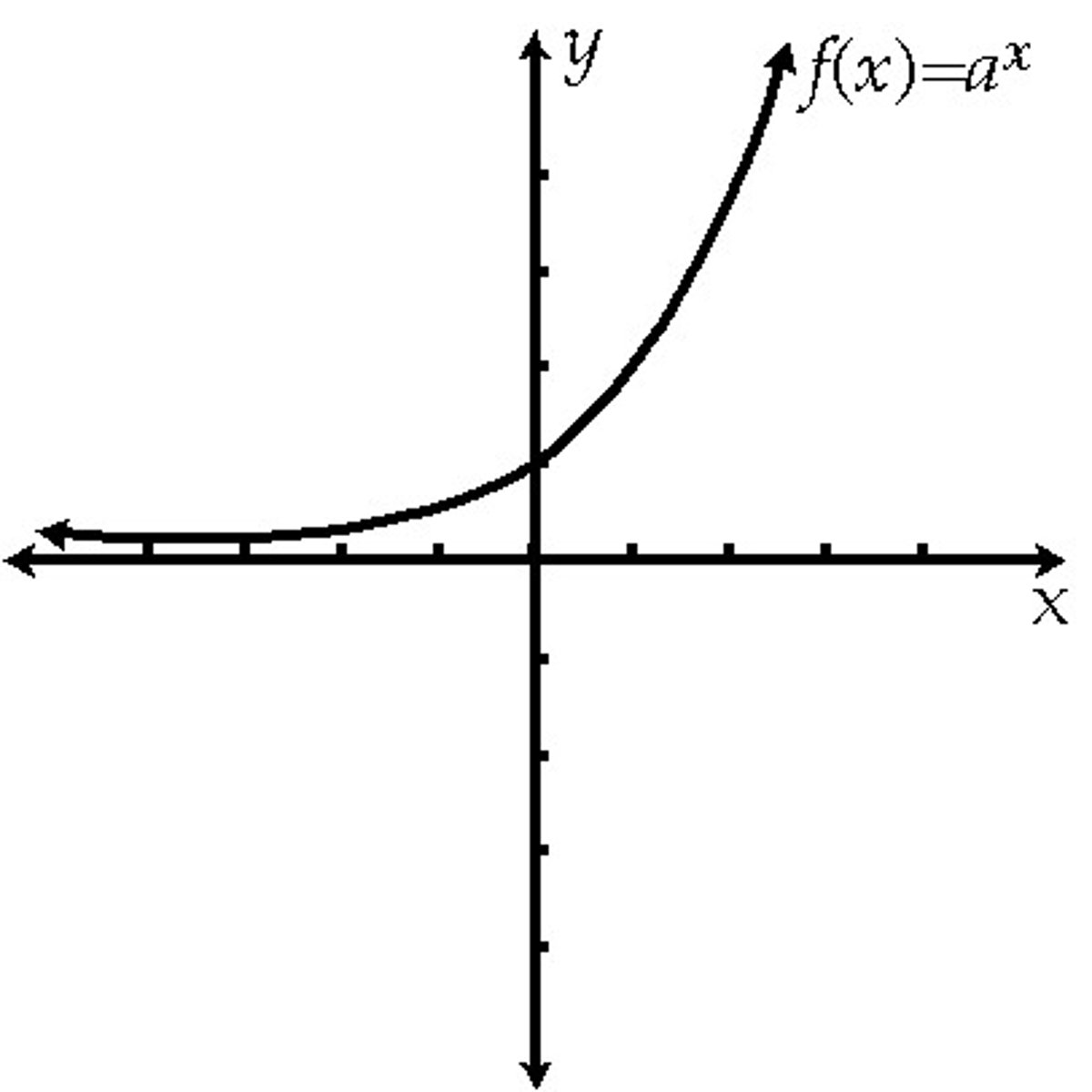
Exponential Growth
a > 0 b > 1
3(1.5)^x
1/120 (2)^x
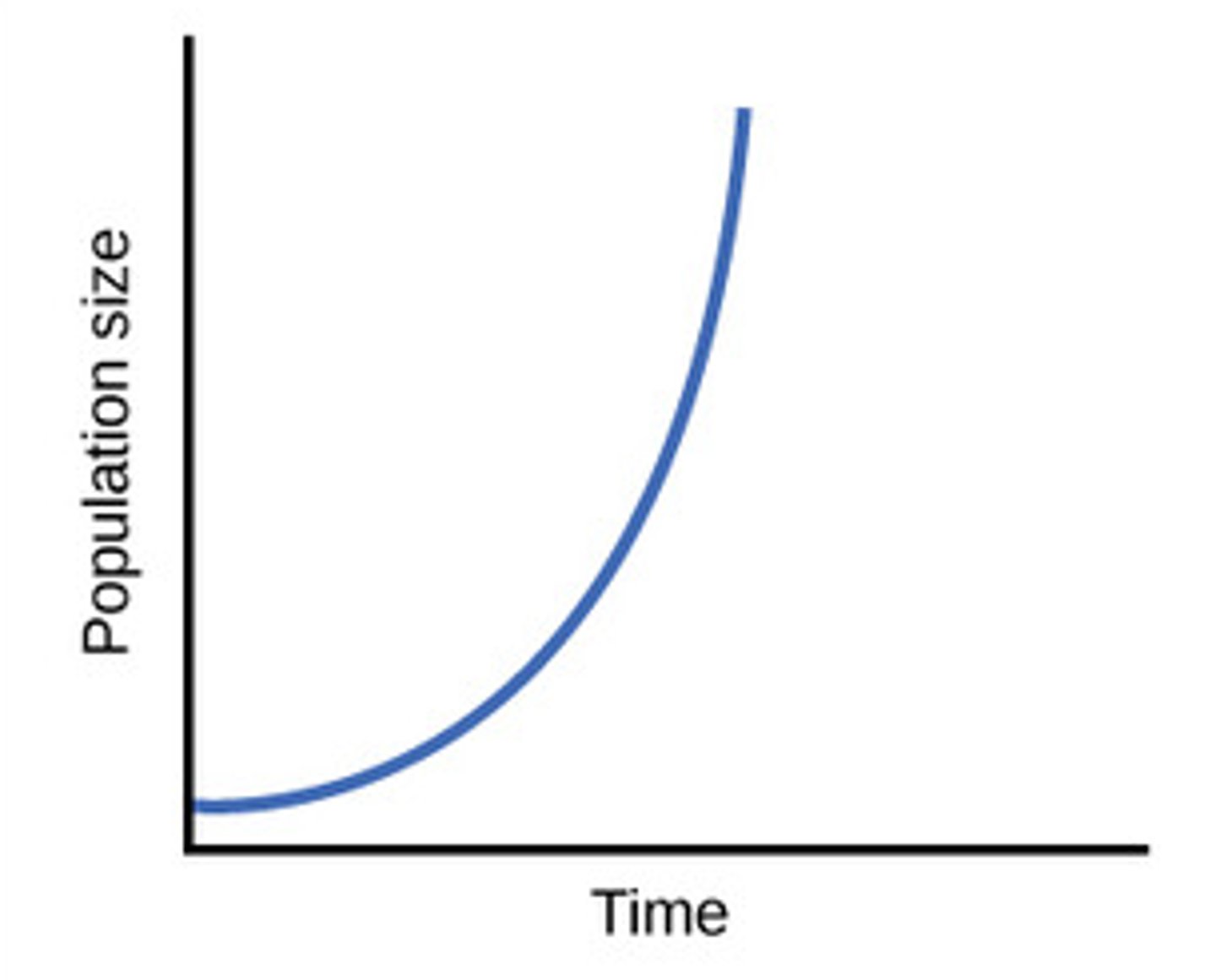
Exponential Decay
a > 0 0 < b < 1
5/2 (0.012)^x
0.013 (2/5)^x
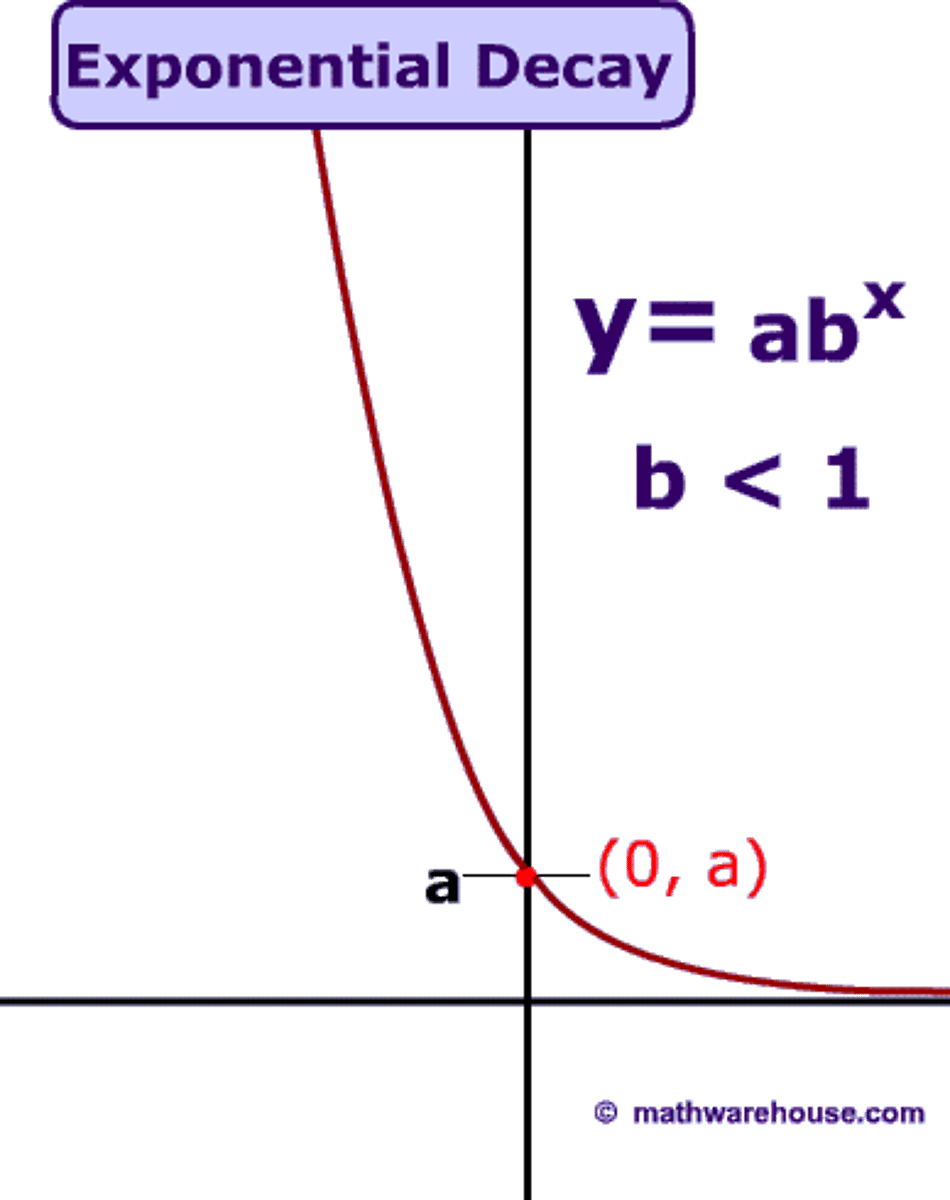
a value in exponential will always be
+
To find b in exponential graph...
have two sets of values
6 = ab^0 (Initial Value)'
a = 6
3 = ab^1 (1,3) was a value
b = 1/2
In order for a function to be invertible...
If each output value is mapped by a unique input value.
Passes vertical line test
We may need to restrict domains for this...
(ex: Logs/Exponents)
Extraneous Solutions in Logs
plug it back in and get a negative log?
PLUG IT INTO O.G QUESTION
Nope.
Residual
actual value - predicted value
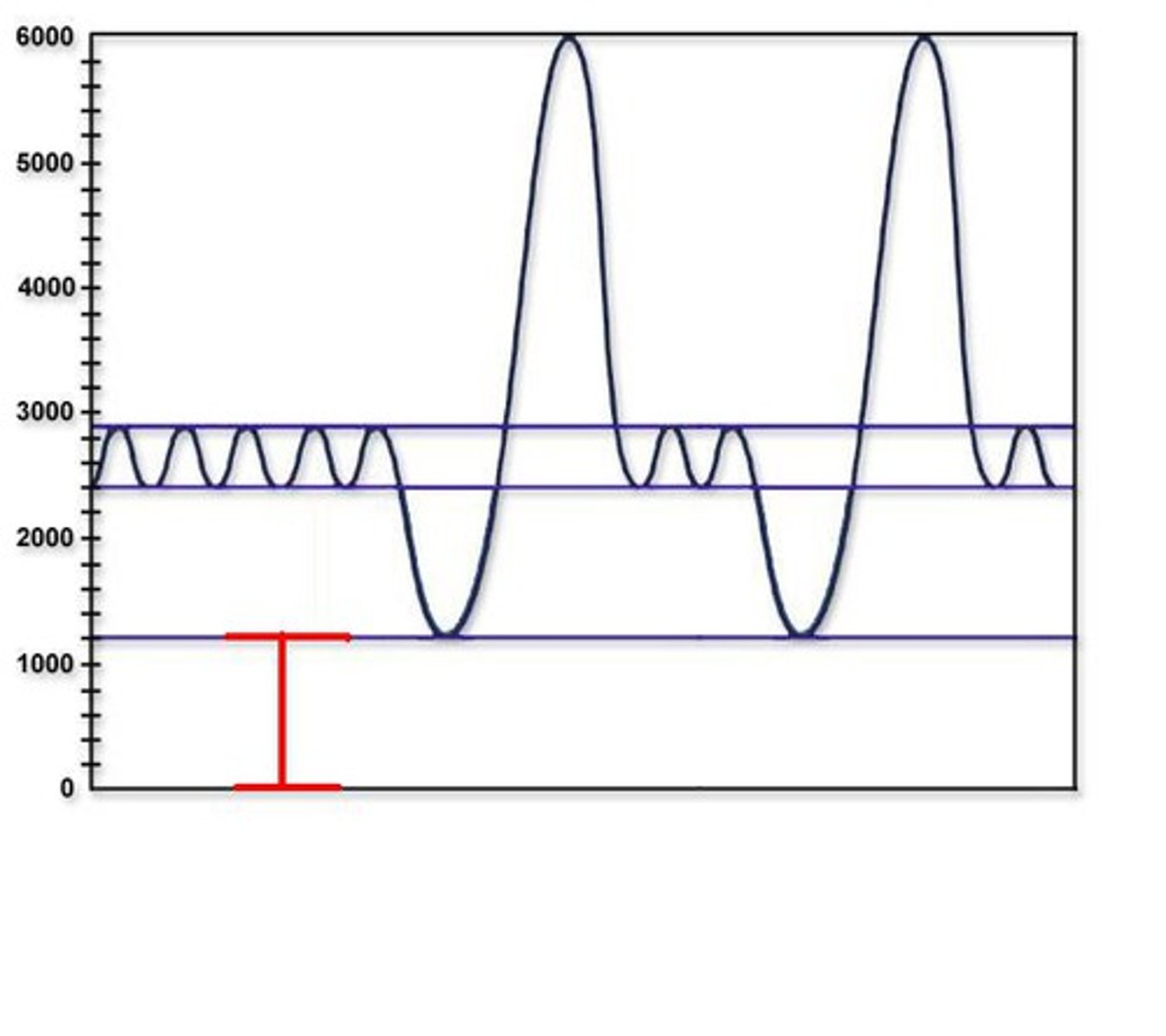
tanx
sinx/cosx
VA: pi/2 3pi/2
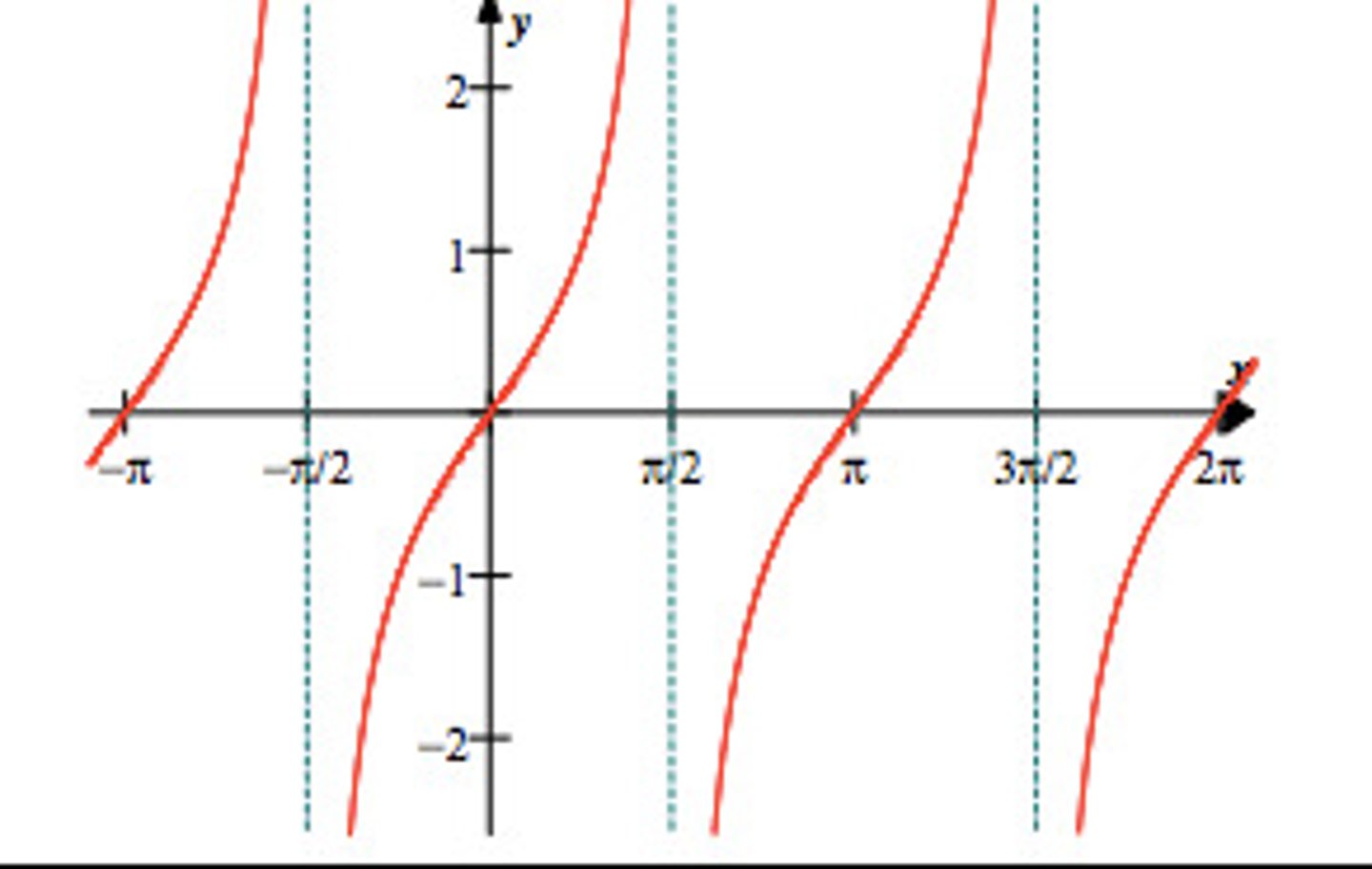
point slope form (Needed for FRQ asking use ROC to estimate x=#)
y-y₁=m(x-x₁)
In order to see if a function can be inversible,
it must pass the horizontal line test
in circle problems where it asks to make a sin/cos function,
AMP = RADIOUS
ferris wheel radius is 30, amp is 30.
when it crosses through x-axis
ODD multiplicity (doesn't bounce)